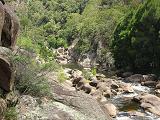
The Kowmung River very near the Colong Caves
The battle in Melbourne 1971
How a State Issue became National

The Kowmung River very near the Colong Caves |
Saving Colong Caves
The battle in Melbourne 1971 How a State Issue became National |
|
Briefly, APCMA (Assoc Portland Cement Manufacturing Company Aust.) acquired long-existing rights to mine limestone about Mt Armour, a distinctive pointed mountain in the middle of the Kanangra-Boyd wilderness area of the Blue Mountains. Apart from partly overgrown access tracks, the leases and their surrounds were untouched bush. The region under threat, was not only the focal point of a large wilderness area, but featured extensive karst features. In Sydney, the Save Colong Committee, was set up, to prevent the mining of the Mt Armour karst region. The Colong Caves, long known, were more fully explored and mapped, the individual caves being named after cabinet members. In 1970 Colong Committee attracted some modest publicity, restricted to NSW, by staging protests at the Annual General Meeting of APCMA. Of course only shareholders could attend the AGM itself, so the Colong Committee started purchasing marketable parcels of APCMA shares, and then transferring individual shares to concerned individuals. By early 1971, APCMA had on its share register several hundred shareholders who each owned just one share. The next AGM would obviously supply a publicity forum for all those many in New South Wales opposed to the mining of Mt Armour and the Colong Caves. APCMA sought to minimise adverse publicity at its 1971 AGM by transferring its annual meeting from Sydney where it had always been held to Melbourne. The Company gave its shareholders the minimun notice of the date and place of this meeting. Thus only a handful of the many conservationist shareholders, almost all resident in Sydney, could be expected to attend. Smart thinking by the Board. The leading group behind the (NSW) campaign to save Mt Armour was the Colong Committee. Although its goal was the establishment of what was to become the Kanangra-Boyd National Park, whose very centre is Mt Armour, it focused most attention on the Colong caves, which lay in the limestone around Mt Armour targetted for mining. The caves there were mapped or remapped, and each was given the name of a NSW politician. When APCMA announced (with minimal notice) that its AGM for 1971 would be held in Melbourne -- it seemed a most clever strategy by the Company -- as the conservation dispute was then seen as being purely local. However the Save Colong Committee contacted well-known Victorian cavers, Nic White and Harvey Cohen, and asked to attempt to recruit as many as they could to attend this Melbourne AGM either as shareholders or as shareholder's proxies. Each would be attendee having to become the proud owner of a single share (value about a dollar) in APCMA. The Colong Committee had supplied both Nic and Harvey with a set of 35 mm slides, and a bundle of information. Rapidly becoming experts on the issues involved, it was time to recruit AGM attendees. Nic addressed a meeting a Melbourne University, Harvey addressed meetings at La Trobe and Monash Universities, and Harvey also spent much time at newspaper offices giving journalists the story. The scanned newspaper cuttings on this web page indicate the extreme level of interest generated, fed as it was by Harvey's claim that he was "digging protestors out from holes in the ground" (as quoted in an item in the Australian) and the staging of a mid-city abseil to deliver proxy notices to the Melbourne company offices of APCMA. Harvey Cohen was approached just before the AGM Meeting, asked whether he would welcome attendance of Monash Maoists. He curtly declined the offer. This was to be a meeting of well-dressed, committed protestors. And Dr Elizabeth Essex, dressed in boiler suit, helmet, with 20m of rope about her neck, carrying a cap lamp, played her part in all this to perfection, as seen in the Sun Herald on 29/4/1971. APCMA AGM Melbourne April 1971 Extracts from Melbourne newspapers reports on what was the first nationally publicised conservation campaign since the unsuccessful fight for Lake Pedder in 1967/8 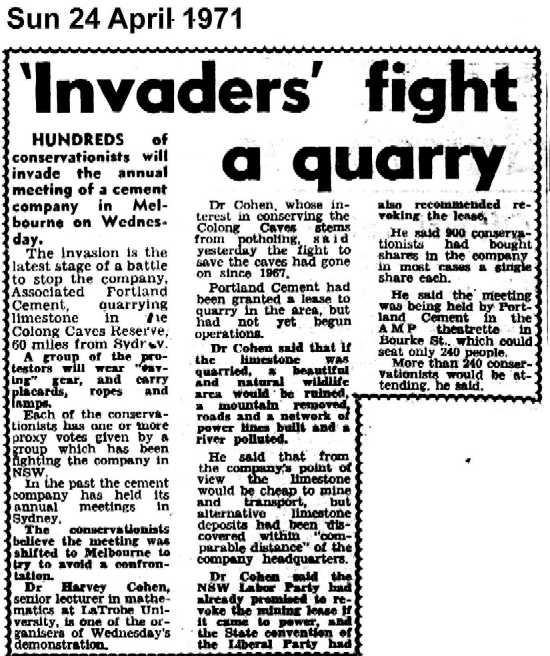
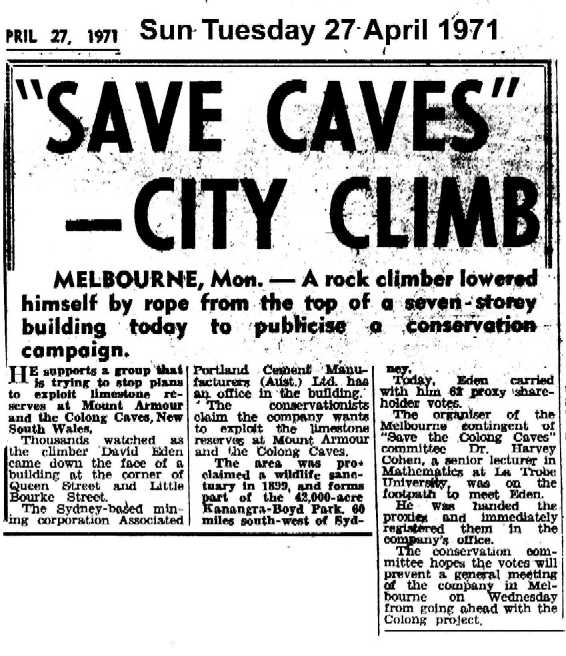
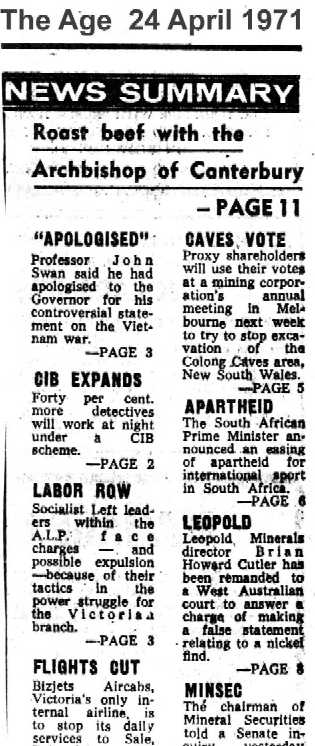
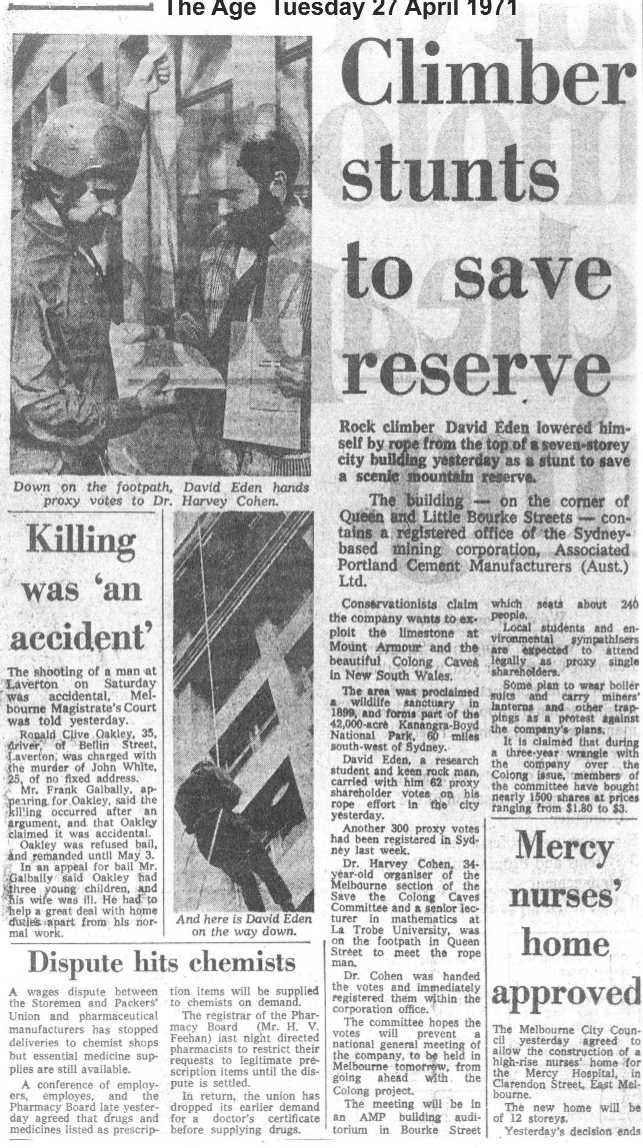
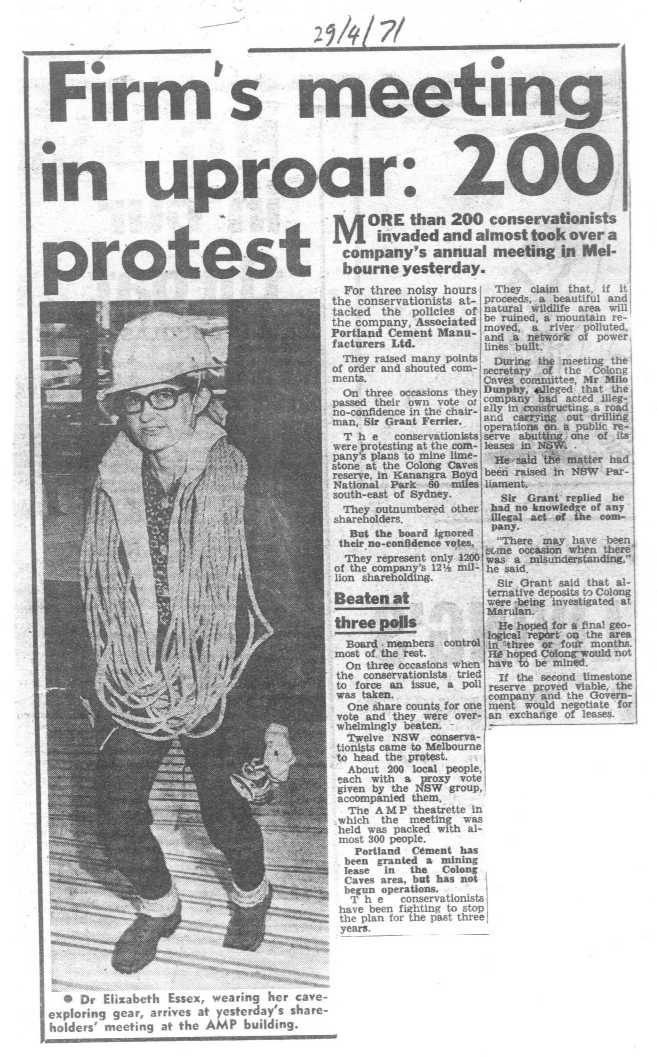
|